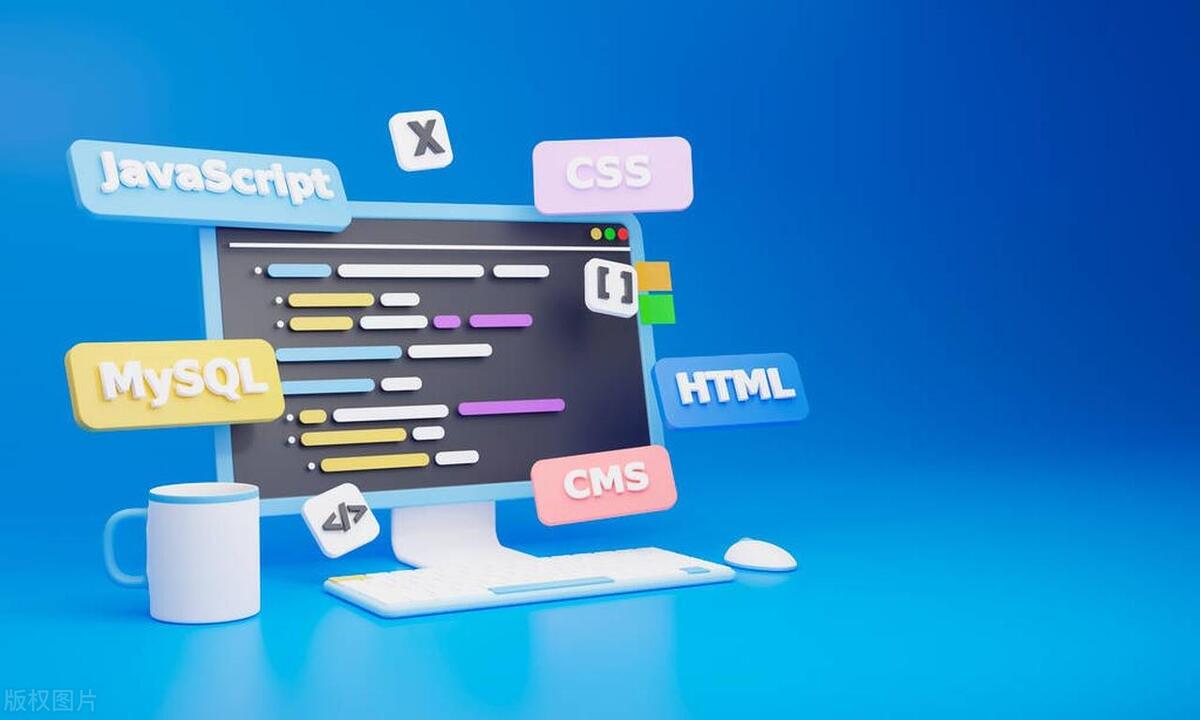Five key points to be noted when improving accessibility in Vue projects: First, use semantic HTML tags, such as

When working on Vue projects, many people tend to ignore accessibility (a11y), but in fact this is an important part of building high-quality web applications. A11y becomes particularly important especially when you want the product to be used by more people, including visually impaired, keyboard navigation users and other groups. Vue itself does not affect the implementation of a11y, but some details during the development process will directly affect the user experience.

Use semantic HTML tags
Many people like to use div or span to wrap various interactive elements, such as buttons or links, but this is actually a big pit in terms of accessibility. Screen readers rely on semantic tags to understand page structure and functionality.

- Use
<button></button>for buttons, don't usediv @click="xxx"; - For links, you should use
<a href="..."></a>instead of adding a span with click event; - Form controls must be used in conjunction with
<label for="id"></label>so that the screen reader can correctly associate the description information.
If you really need to customize components, remember to add ARIA attributes, such as role="button" and tabindex="0" to allow elements to have basic focusability and behavior.
Dynamic content updates and focus management
In Vue, conditional rendering and data changes often trigger DOM updates. In this case, if the user is operating the page, he may encounter problems such as "lost focus" or "content updated but no prompt".

- After the page switches or area refreshes, you should actively set the focus to the main content area, such as a newly loaded form or title;
- When using
v-ifto control pop-up display, it is recommended to move the focus to the first focusable element inside the pop-up after opening; - For content that is updated in real time (such as notification areas), you can consider using
aria-livearea to tell the screen reader that there is dynamic content update here.
For example:
<div aria-live="polite" class="notification">
{{ message }}
</div> This way, when message changes, the screen reader will automatically read out new content.
Keyboard navigation and tab index control
Many users rely entirely on the keyboard to operate web pages, so it is important to ensure that all interactive elements are accessible via the Tab key.
- In the custom component, add
tabindex="0"to the clickable element so that it can be focused; - Don't abuse the high value of
tabindex="999", it will disrupt the default tab order and cause confusion; - When there are multiple focusable items inside the component, pay attention to whether the tab process is reasonable. For example, the tab range should be restricted to its internal content after the pop-up window is opened.
You can test whether these behaviors are as expected through the "Keyboard Navigation" mode in the browser developer tools.
Images and icons need alternative text
If the picture does not have a suitable alternative text, it will be blank for visually impaired users. Icons, in particular, are often decorative, but may also carry important meanings.
- All
<img alt="Vue Accessibility (a11y) Guidelines" >must have analtattribute, even if it is empty (for pure decor); - If you are using icon fonts or SVG, you should also add
aria-labeloraria-hidden="true"according to the situation; - When using the component library icon in Vue, be careful to check whether it provides accessible properties by default.
For example, when using SVG icon:
<svg aria-label="Search" role="img"> <!-- path data --> </svg>
This way the screen reader can know what the icon is for.
Basically that's it. The a11y practice in the Vue project is not complicated, but it is easily overlooked. As long as you pay more attention to a few key points in daily development, you can significantly improve the usability and inclusion of products.
The above is the detailed content of Vue Accessibility (a11y) Guidelines. For more information, please follow other related articles on the PHP Chinese website!

Hot AI Tools

Undress AI Tool
Undress images for free

Undresser.AI Undress
AI-powered app for creating realistic nude photos

AI Clothes Remover
Online AI tool for removing clothes from photos.

Clothoff.io
AI clothes remover

Video Face Swap
Swap faces in any video effortlessly with our completely free AI face swap tool!

Hot Article

Hot Tools

Notepad++7.3.1
Easy-to-use and free code editor

SublimeText3 Chinese version
Chinese version, very easy to use

Zend Studio 13.0.1
Powerful PHP integrated development environment

Dreamweaver CS6
Visual web development tools

SublimeText3 Mac version
God-level code editing software (SublimeText3)
 How does React handle focus management and accessibility?
Jul 08, 2025 am 02:34 AM
How does React handle focus management and accessibility?
Jul 08, 2025 am 02:34 AM
React itself does not directly manage focus or accessibility, but provides tools to effectively deal with these issues. 1. Use Refs to programmatically manage focus, such as setting element focus through useRef; 2. Use ARIA attributes to improve accessibility, such as defining the structure and state of tab components; 3. Pay attention to keyboard navigation to ensure that the focus logic in components such as modal boxes is clear; 4. Try to use native HTML elements to reduce the workload and error risk of custom implementation; 5. React assists accessibility by controlling the DOM and adding ARIA attributes, but the correct use still depends on developers.
 Server-Side Rendering with Next.js Explained
Jul 23, 2025 am 01:39 AM
Server-Side Rendering with Next.js Explained
Jul 23, 2025 am 01:39 AM
Server-siderendering(SSR)inNext.jsgeneratesHTMLontheserverforeachrequest,improvingperformanceandSEO.1.SSRisidealfordynamiccontentthatchangesfrequently,suchasuserdashboards.2.ItusesgetServerSidePropstofetchdataperrequestandpassittothecomponent.3.UseSS
 A Deep Dive into WebAssembly (WASM) for Front-End Developers
Jul 27, 2025 am 12:32 AM
A Deep Dive into WebAssembly (WASM) for Front-End Developers
Jul 27, 2025 am 12:32 AM
WebAssembly(WASM)isagame-changerforfront-enddevelopersseekinghigh-performancewebapplications.1.WASMisabinaryinstructionformatthatrunsatnear-nativespeed,enablinglanguageslikeRust,C ,andGotoexecuteinthebrowser.2.ItcomplementsJavaScriptratherthanreplac
 How to manage component state using immutable updates in React?
Jul 10, 2025 pm 12:57 PM
How to manage component state using immutable updates in React?
Jul 10, 2025 pm 12:57 PM
Immutable updates are crucial in React because it ensures that state changes can be detected correctly, triggering component re-rendering and avoiding side effects. Directly modifying state, such as push or assignment, will cause React to be unable to detect changes. The correct way to do this is to create new objects instead of old objects, such as updating an array or object using the expand operator. For nested structures, you need to copy layer by layer and modify only the target part, such as using multiple expansion operators to deal with deep attributes. Common operations include updating array elements with maps, deleting elements with filters, adding elements with slices or expansion. Tool libraries such as Immer can simplify the process, allowing "seemingly" to modify the original state but generate new copies, but increase project complexity. Key tips include each
 Security Headers for Frontend Applications
Jul 18, 2025 am 03:30 AM
Security Headers for Frontend Applications
Jul 18, 2025 am 03:30 AM
Front-end applications should set security headers to improve security, including: 1. Configure basic security headers such as CSP to prevent XSS, X-Content-Type-Options to prevent MIME guessing, X-Frame-Options to prevent click hijacking, X-XSS-Protection to disable old filters, HSTS to force HTTPS; 2. CSP settings should avoid using unsafe-inline and unsafe-eval, use nonce or hash and enable reporting mode testing; 3. HTTPS-related headers include HSTS automatic upgrade request and Referrer-Policy to control Referer; 4. Other recommended headers such as Permis
 What are custom data attributes (data-*)?
Jul 10, 2025 pm 01:27 PM
What are custom data attributes (data-*)?
Jul 10, 2025 pm 01:27 PM
The data-* attribute is used in HTML to store additional data, and its advantages include that the data is closely related to elements and comply with HTML5 standards. 1. When using it, name it starts with data-, such as data-product-id; 2. It can be accessed through JavaScript's getAttribute or dataset; 3. Best practices include avoiding sensitive information, reasonable naming, paying attention to performance and not replacing state management.
 Applying CSS Styles to Scalable Vector Graphics (SVG)
Jul 10, 2025 am 11:47 AM
Applying CSS Styles to Scalable Vector Graphics (SVG)
Jul 10, 2025 am 11:47 AM
To style SVGs using CSS, you first need to embed SVGs inline into HTML for fine control. 1. Inline SVG allows its internal elements such as or to be directly selected through CSS and to apply styles, while external SVG only supports global styles such as width and height or filters. 2. Use regular CSS syntax such as .class:hover to achieve interactive effects, but use fill instead of color to control the color, and use stroke and stroke-width to control the outline. 3. Use class names to organize styles to avoid duplication and pay attention to naming conflicts and scope management. 4. The SVG style may be inherited from the page, and can be reset through svg*{fill:none;stroke:none;} to avoid
 How to add a favicon to a website?
Jul 09, 2025 am 02:21 AM
How to add a favicon to a website?
Jul 09, 2025 am 02:21 AM
Adding website Favicon requires preparing icon files, placing the correct path and quoting them. 1. Prepare multi-size .ico or .png icons, which can be generated by online tools; 2. Put favicon.ico in the website root directory; 3. If you need to customize the path or support more devices, you need to add a link tag reference in the HTMLhead; 4. Clear the cache or use the tool to check whether it is effective.






